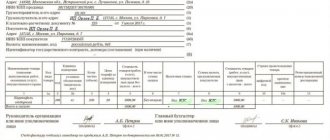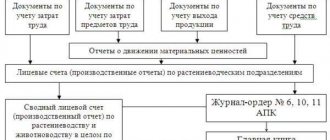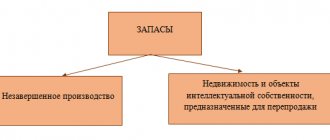New MODU for contractors
New PBU 2/2008 “Accounting for construction contracts”, approved by order of the Ministry of Finance of the Russian Federation dated October 24, 2008 No. 116n, regulates accounting only for contractors
(subcontractors).
This is fundamentally different from its predecessor - PBU 2/94 “Accounting for agreements (contracts) for capital construction”, approved by Order of the Ministry of Finance of the Russian Federation dated December 20, 1994 No. 167, which determined the rules for maintaining accounting for “construction” contracts as for contractors, as well as for customer-developers
.
That is, since 2009.
(the new PBU 2/2008 comes into force, and the old PBU 2/94 loses force with the accounting statements
of 2009
) customer-developers will be guided when maintaining accounting for construction contracts only by the ancient, like mammoths, Regulations on accounting for long-term investments, approved by letter of the Ministry of Finance of the Russian Federation dated December 30, 1993 No. 160.
Accounting rules for contractors have changed quite significantly.
Which is not surprising - after all, PBU 2/94 was approved back in 1994 (more than 14 years ago), before the adoption of the Law on Accounting and PBU 9/99 and 10/99, which determined the procedure for recognizing income and expenses, as a result of which PBU 2/ 94 seemed rather chaotic by today's standards.
Numerous definitions contained in PBU 2/94 are absent in the new PBU 2/2008.
After all, the essence of such concepts as construction contract, developer, investor, contractor, etc., is regulated by the Civil Code of the Russian Federation and other Federal laws. Therefore, the Ministry of Finance considered it inappropriate to duplicate these definitions in the text of the PBU.
The new PBU 2/2008 applies not only to construction contracts, the duration of which is more than one reporting year (long-term in nature) or the start and end dates of which fall on different reporting years.
PBU 2/2008 also applies to service contracts
in the field of architecture, engineering and technical design in construction and other services inextricably linked with the facility under construction,
for
the reconstruction, modernization, repair of fixed assets, for their liquidation (disassembly), including associated environmental restoration, duration of execution which span more than one reporting year (long-term in nature) or whose start and end dates fall
on different reporting years
.
One or more?
As before, accounting for income, expenses and financial results is kept separately
for each executed contract.
Moreover, previously, if one contract covered a number of projects, then accounting for the costs of performing work for each such project could be considered as accounting for the costs of performing work under a separate contract, provided
that the costs and financial results for each project can be established separately.
Now, in the case where one contract provides for the construction of a complex of facilities for one or several customers under a single project, for accounting purposes the construction of each facility must
(and cannot, as before) be considered
as a separate agreement
.
two conditions must be met simultaneously
(and not one, as before)
conditions
:
A)
there is technical documentation for the construction of each facility;
b)
For each object, income and expenses can be reliably determined.
PBU 2/94
provided that a contractor may account for the costs of several contracts entered into with one developer or several developers if they are concluded as a complex transaction or relate to the same project.
This implied that the contractor considered these several contracts for accounting purposes as a single contract
.
According to the new PBU 2/2008
two or more contracts concluded by an organization with one or more customers should be considered for accounting purposes
as one contract
, subject to
the following conditions being simultaneously
:
A)
due to the relationship, individual contracts actually relate to a single project with a rate of profit determined as a whole for the contracts;
b)
contracts are executed simultaneously or sequentially (continuously following one another).
PBU 2/2008
the procedure for maintaining records in a situation where, during the execution of a contract,
an additional construction project
(additional work) is included in the technical documentation has been regulated.
In this case, for accounting purposes, the construction of an additional facility (performing additional work) should be considered as a separate contract
subject to
at least one
of the following conditions:
A)
differs
significantly in structural, technological or functional characteristics from the objects provided for in the contract;
b)
the price of construction of an additional facility (additional work) is determined on the basis of an
additional estimate
.
Revenue recognition
Former PBU 2/94
did not explain the subtleties of determining the amount of income under construction contracts.
PBU 2/2008
determines that the amount of revenue under the contract is determined based on the cost of work at the price specified in the contract.
Price may be adjusted
in cases and on the terms stipulated by the contract, in connection with:
changes in the cost of work arising during the execution of the contract by the agreed parties
under the contract (hereinafter referred to as
deviations
), which are caused either by the use of higher quality and more expensive building materials and structures, as well as by the performance of work that is more complex than those provided for in the technical documentation, or work not provided for in the technical documentation (increase in revenue under the contract) , or failure to perform any work provided for in the technical documentation (reduction of revenue under the contract);
requirements imposed by the organization on customers and other persons specified in the contract
(hereinafter referred to as
claims
):
for reimbursement of costs
not included in the estimate that the organization was forced to incur in connection with the actions (inaction) of these persons;
on reimbursement of reasonable expenses
incurred in connection with the identification and elimination of defects in technical documentation provided by the customer or design organization (for example, in connection with the discovery of groundwater during construction), in connection with the delay or stoppage of work due to the customer’s failure to provide assistance to the organization , provided for by the terms of the contract (for example, for the transfer to the organization for use of buildings and structures necessary for the performance of work, provision of temporary connections for power supply networks, water supply), etc. (increase in revenue under the contract);
– paid to the organization in addition to the estimate
according to the terms of the contract in amounts (hereinafter referred to as
incentive payments
), for example, for reducing construction time, etc. (increasing revenue under the contract).
In this case, the revenue under the contract is adjusted
for the amounts of deviations, claims and incentive payments, if there is
confidence
that such amounts will be recognized by customers or other persons specified in the contract to whom they are presented, and
amount
can be reliably determined.
Unrelated
is not included
in the revenue under the contract and is taken into account as other income or included in the reduction of direct expenses under the contract.
Such income includes, for example:
– income under a purchase and sale agreement from the organization’s sale of excess building materials and structures acquired for the execution of the agreement;
– income in the form of rent for construction machinery and equipment leased to other persons, which are temporarily not used for the execution of the contract.
Recognition of expenses
PBU 2/2008 defines in detail the composition and subtypes of expenses.
Expenses under the contract
are
those incurred by the organization for the period from the beginning of the contract to its completion:
– expenses related directly to the execution of the contract ( direct expenses
under contract);
– part of the organization’s total costs for the execution of contracts attributable to this contract ( indirect costs
under contract);
– expenses not related to the construction activities of the organization, but reimbursed by the customer under the terms of the contract ( other expenses
under contract).
Indirect costs
under the contract are included in the expenses for each contract by distributing the organization’s total expenses for the execution of contracts.
Distribution methods
between contracts, indirect costs are determined by the organization independently (for example, by calculations using estimated norms and prices that reflect the current level of production, technological and organizational standards in construction) and are applied systematically and consistently.
other expenses
under the contract may include certain types of expenses for the general management of the organization, for carrying out research and development work, and other expenses, the reimbursement of which by the customer is specifically provided for in the contract.
PBU 2/2008
It has been established that direct costs under the contract, in addition to those actually incurred, include
expected unavoidable costs
reimbursed by the customer under the terms of the contract.
The new PBU calls such expenses foreseeable.
.
Foreseen expenses are taken into account either as they arise
in the process of carrying out construction work (to eliminate deficiencies in projects and construction and installation work, to dismantle equipment due to defects in anti-corrosion protection, etc.),
or by creating a reserve
to cover anticipated costs (for warranty service and warranty repairs of the created object, etc.).
Reserve
to cover anticipated expenses is formed provided that such expenses can be reliably
determined
.
The rules for accounting for expenses associated with obtaining (concluding) construction contracts have been changed.
Similar standards were contained in the old PBU 2/94; in the new PBU 2/2008 they simply acquired a more precise and modern formulation.
Previously, such expenses could be accounted for (by choice) as deferred expenses or as expenses of the reporting period in which they were incurred.
To do this, such expenses had to meet two conditions:
– expenses can be separately allocated;
– there is confidence that the contract will be concluded.
Now costs associated directly with the preparation and signing of the contract (for the development of a feasibility study, preparation of an insurance contract for the risks of construction work, etc.) incurred by the organization before the date of its signing
, are included in the expenses under the contract (more precisely, in the composition of
deferred
), if they can be
reliably determined
and if in the reporting period in which they arose, there is
a probability that the contract will be signed
.
In case of non-compliance
of these conditions, the specified expenses are recognized as other expenses of the period in which they are incurred.
The ending is in No. 2 “A-E”.
Category Consultations. Current changes in accounting: PBU 18/02, FSBU 5/2019 and FSBU 25/2018
Orders of the Ministry of Finance approved two new standards - FSBU 5/2019 and FSBU 25/2018, as well as an update of one of the existing ones - PBU 18/02. The obligation to use them, fortunately, is introduced sequentially:
- PBU 18/02 – from reporting for 2021 (Order of the Ministry of Finance of the Russian Federation No. 236n)
- FSBU 5/2019 – from reporting for 2021 (Order of the Ministry of Finance of the Russian Federation No. 180n)
- FSBU 25/2018 – from reporting for 2022 (order of the Ministry of Finance of the Russian Federation No. 208n)
So, according to the new Federal Accounting Standards, there is still time for preparation, but PBU 18/02 must be applied in reporting for the current year.
Undoubtedly, an experienced accountant will be able to independently cope with accounting transformations, however, in order to minimize risks and be confident in the correctness, we recommend contacting reliable professionals.
Experts from the Audit practice will provide support in the transition to new standards: they will develop a methodology, update accounting policies, set up registers for correct calculations and, if necessary, provide consulting support on complex accounting issues.
The Group’s specialists have prepared a brief analysis of the innovations:
PBU 18/02
Since 2021, a new edition of PBU 18/02 has been applied, which is in many ways similar to international financial reporting standards, namely IFRS 12 “Income Taxes”.
Among the key changes is the clarification of the composition and names of indicators reflected in the financial results statement, which reveal the amount of income tax. In particular, deferred taxes must now be calculated using the balance sheet method.
2019 was a transition period when an organization could apply the updated standard, enshrining this in its accounting policies, and starting with reporting for 2021, the use of the standard is already mandatory.
As noted by Daria Perkovskaya, Group Audit and Consulting Partner
, the balance sheet method for calculating differences between accounting and tax accounting significantly simplifies the accounting process and is more effective compared to the previously used deferment method.
FSBU 5/2019 “Reserves”
FAS 5/2019 “Inventories” is mandatory for use with reporting for 2021, however, as with PBU 18/02, it can be applied starting from the current year, provided that this decision is reflected in the company’s accounting policies. The standard replaced PBU 5/01 “Accounting for inventories”.
Among the fundamental innovations - firstly, an unambiguous definition and criteria for recognizing reserves have been formulated; secondly, the list of assets related to reserves has been significantly expanded. In addition, the FSBU includes rules for accounting for unfinished construction projects, which was not included in the previous standard.
“The new provisions of the FSBU establish a general approach to determining the costs included in the actual cost of inventories. In addition, the FSB establishes the concept of fair value of inventories and the rules for accounting for inventories obtained during the dismantling and repair of fixed assets, and also specifies the procedure for creating reserves for reducing the value of material assets, comments Daria Perkovskaya
. — This is a significant change in the accounting procedure for inventory and may cause some difficulties during the transition. If you have questions or doubts about the correct application of the standard, we recommend seeking clarification from professionals.”
FSBU 25/2018 “Accounting for leases”
FAS 25/2018 was developed on the basis of the International Financial Reporting Standard - IFRS 16 “Leases”. The standard is based on the economic content of the agreement, and not on the civil law classification under Federal Law No. 164-FZ of October 29, 1998 “On financial lease (leasing)” or Chapter. 34 “Rent” of the Civil Code of the Russian Federation.
The FSB excludes the concept of “property” and introduces the concept of “lease accounting object,” which must meet four conditions: be provided for a period specified in the agreement; clearly identifiable by the terms of the contract; can be used by the tenant to make a profit; the tenant can determine how to use the property. Only if the leased object meets all conditions can FSBU 25/2018 be applied. In this case, the object is reflected both in the accounting of the tenant and the lessor.
“Early application of the new standard is advisable for companies that are subject to mandatory audit, in accordance with Federal Law No. 307-FZ,” notes Lyudmila Striy, Deputy Head of the Audit and IFRS practice.
— FAS 25/2018 is mandatory for use from 2022, while IFRS 16 “Lease” has been introduced since 2021. Thus, IFRS specialists are now more prepared for innovations in Russian accounting than specialists in the field RAS".
Experts from the BUSINESS PROFILE Group will provide qualified consulting and methodological support and help you comfortably switch to new standards and correctly apply them in the future.
To consult with experts, please fill out the feedback form or write to an expert using the “Ask a question” form.
PBU 2/2008 “Accounting for construction contracts”
Approved by order of the Ministry of Finance of Russia dated November 24, 2008 No. 116n,
as amended from April 23, 2009 No. 35n, from October 25, 2010 No. 132n,
dated 08.11.2010 No. 144n, dated 27.04.2012 No. 55n
I. General provisions
1.
This Regulation establishes the specifics of the procedure for the formation in accounting and disclosure in financial statements of information on income, expenses and financial results by organizations (with the exception of credit organizations and state (municipal) institutions) that are legal entities under the legislation of the Russian Federation and acting as contractors or as subcontractors (hereinafter referred to as organizations) in construction contracts (hereinafter referred to as contracts), the duration of which is more than one reporting year (long-term in nature) or the start and end dates of which fall on different reporting years.
(as amended by order of the Ministry of Finance of Russia dated October 25, 2010 No. 132n)
2.
This Regulation also applies to contracts for the provision of services in the field of architecture, engineering and technical design in construction and other services inextricably linked with the object under construction, for the performance of work on the restoration of buildings, structures, ships, on their liquidation (dismantling), including related environmental restoration, the duration of which is more than one reporting year (long-term in nature) or the start and end dates of which fall on different reporting years.
(as amended by order of the Ministry of Finance of Russia dated April 23, 2009 No. 35n) 2.1. This Regulation may not be applied by small businesses, with the exception of issuers of publicly offered securities, as well as socially oriented non-profit organizations.)
(as amended by orders of the Ministry of Finance of Russia dated November 8, 2010 No. 144n, dated April 27, 2012 No. 55n)
II. Accounting objects under contracts
3.
Accounting for income, expenses and financial results is maintained separately for each executed contract.
4.
In the case where one contract provides for the construction of a complex of facilities for one or several customers under a single project, for accounting purposes the construction of each facility should be considered as a separate contract, subject to the following conditions being simultaneously met:
a) there is technical documentation for the construction of each facility;
b) income and expenses can be reliably determined for each object.
5.
Two or more contracts concluded by an organization with one or more customers should be considered for accounting purposes as one contract if the following conditions are simultaneously met:
a) due to the relationship, individual contracts actually relate to a single project with a rate of profit determined as a whole for the contracts;
b) contracts are executed simultaneously or sequentially (continuously following one another).
6.
In the event that, during the execution of a contract, an additional construction project (additional work) is included in the technical documentation, for accounting purposes the construction of an additional project (additional work) should be considered as a separate contract if at least one of the following conditions is met:
a) the additional object (additional work) differs significantly in structural, technological or functional characteristics from the objects provided for in the contract;
b) the price of construction of an additional facility (additional work) is determined on the basis of an additional estimate agreed upon by the parties.
III. Recognition of income and expenses under the contract
7.
Income under the contract is recognized by the organization as income from ordinary activities (hereinafter referred to as revenue under the contract) in accordance with the Accounting Regulations “Income of the Organization” PBU 9/99, approved by Order of the Ministry of Finance of the Russian Federation dated May 6, 1999 No. 32n (registered in Ministry of Justice of the Russian Federation May 31, 1999, registration No. 1791)
Taking into account the changes made by orders of the Ministry of Finance of the Russian Federation dated December 30, 1999 No. 107n, dated March 30, 2001 No. 27n, dated September 18, 2006 No. 116n, dated November 27, 2006 No. 156n (registered with the Ministry of Justice Russian Federation: January 28, 2000, registration No. 2064; May 4, 2001, registration No. 2693; October 24, 2006, registration No. 8397; December 28, 2006, registration No. 8698).
8.
The amount of revenue under the contract is determined based on the cost of work at the price specified in the contract, adjusted in cases and under the conditions provided for by the contract, in connection with:
- changes in the cost of work under the contract that arise during the execution of the contract by the agreed parties (hereinafter referred to as deviations), which are caused either by the use of higher quality and more expensive building materials and structures, as well as by the performance of work more complex than those provided for in the technical documentation or work not provided for in technical documentation (increase in revenue under the contract), or failure to perform any work provided for in the technical documentation (decrease in revenue under the contract);
- requirements (hereinafter referred to as claims) made by the organization to customers and other persons specified in the contract: for reimbursement of costs not included in the estimate that the organization was forced to incur in connection with the actions (inaction) of these persons; for reimbursement of reasonable expenses incurred in connection with the identification and elimination of defects in technical documentation provided by the customer or design organization (for example, in connection with the discovery of groundwater during construction), in connection with the delay or stoppage of work due to the customer’s failure to provide assistance to the organization , provided for by the terms of the contract (for example, for the transfer to the organization for use of buildings and structures necessary for the performance of work, provision of temporary connections for power supply networks, water supply), etc. (increase in revenue under the contract);
- amounts paid to the organization in addition to the estimate under the terms of the contract (hereinafter referred to as incentive payments), for example, for reducing construction time, etc. (increasing revenue under the contract).
9.
Contract revenue is adjusted for variances, claims and incentive payments if it is certain that such amounts will be recognized by customers or other parties named in the contract to whom they are presented and their amount can be determined reliably.
10.
Expenses under the contract are recognized by the organization as expenses for ordinary activities in accordance with the Accounting Regulations “Expenses of the Organization” PBU 10/99, approved by Order of the Ministry of Finance of the Russian Federation dated May 6, 1999 No. 33n (registered with the Ministry of Justice of the Russian Federation on May 31, 1999 g., registration No. 1790) <*>.
Taking into account the changes made by orders of the Ministry of Finance of the Russian Federation dated December 30, 1999 No. 107n, dated March 30, 2001 No. 27n, dated September 18, 2006 No. 116n, dated November 27, 2006 No. 156n (registered with the Ministry of Justice Russian Federation: January 28, 2000, registration No. 2064; May 4, 2001, registration No. 2693; October 24, 2006, registration No. 8397; December 28, 2006, registration No. 8698).
11.
Expenses under the contract are those incurred by the organization for the period from the beginning of the contract to its completion:
expenses related directly to the execution of the contract (direct expenses under the contract);
part of the organization’s total expenses for the execution of contracts attributable to this contract (indirect costs under the contract);
expenses not related to the construction activities of the organization, but reimbursed by the customer under the terms of the contract (other expenses under the contract).
12.
Direct costs under the contract, in addition to those actually incurred, include expected unavoidable costs (hereinafter referred to as anticipated costs) reimbursed by the customer under the terms of the contract. Foreseen expenses are taken into account either as they arise during the construction process (to eliminate deficiencies in projects and construction and installation work, to dismantle equipment due to defects in anti-corrosion protection, etc.), or by creating a reserve for coverage anticipated expenses (for warranty service and warranty repairs of the created object, etc.).
A provision for covering anticipated expenses is established provided that such expenses can be reliably determined.
The organization's income not directly related to the execution of the contract, received during the execution of other types of contracts, is not included in the revenue under the contract and is taken into account as other income or included in the reduction of direct expenses under the contract. Such income includes, for example:
income under a purchase and sale agreement from the organization’s sale of excess building materials and structures acquired for the execution of the agreement;
income in the form of rent for construction machinery and equipment leased to other persons, which are temporarily not used for the execution of the contract.
13.
Indirect contract costs are included in the costs of each contract by allocating the organization's total expenses for the execution of contracts. Methods for distributing indirect costs between contracts are determined by the organization independently (for example, by calculations using estimated norms and prices that reflect the current level of production, technological and organizational standards in construction) and are applied systematically and consistently.
14.
Other expenses under the contract may include certain types of expenses for the general management of the organization, for carrying out research and development work, and other expenses, the reimbursement of which by the customer is specifically provided for in the contract.
15.
Costs associated directly with the preparation and signing of the contract (for the development of a feasibility study, preparation of an insurance contract for the risks of construction work, etc.) incurred by the organization before the date of its signing are included in the costs of the contract if they can be reliably determined and if in the reporting period in which they arose, there is a possibility that the contract will be signed. If these conditions are not met, these expenses are recognized as other expenses for the period in which they are incurred.
16.
Contract expenses are recognized in the reporting period in which they are incurred. In this case, expenses related to work performed under the contract are taken into account as production costs, and expenses incurred in connection with upcoming work are considered as deferred expenses. As revenue under the contract is recognized, contract expenses are written off to determine the financial result of the reporting period in the manner established by these Regulations.
IV. Recognition of financial results
17.
Revenue under the contract and expenses under the contract are recognized on an “as ready” basis if the financial result (profit or loss) of fulfilling the contract as of the reporting date can be reliably determined.
The “as ready” method provides that revenue under the contract and expenses under the contract are determined based on the degree of completion of work under the contract confirmed by the organization as of the reporting date and are recognized in the income statement in the same reporting periods in which the relevant work was completed, regardless of whether they should or should not be presented to the customer for payment before the complete completion of the work under the contract (the stage of work provided for by the contract).
In the event that a reliable determination of the financial result of the execution of a contract in a certain reporting period is impossible, revenue under the contract is recognized in accordance with paragraph 23 of these Regulations.
18.
Regardless of the procedure for determining the price of the work to be performed provided for in the contract, the necessary and sufficient conditions for reliably determining the financial result of the contract are:
- confidence that the organization will receive economic benefits associated with the contract;
- the ability to identify and reliably determine expenses incurred under the contract.
19.
In the case where the contract provides for the payment by the customer of a fixed price for the performance of all work stipulated by the contract or a price determined on the basis of the price fixed in the contract for each unit of work performed (structure, type of work, etc.), in addition to the necessary requirements established by paragraph 18 of these Regulations and sufficient conditions for reliable determination of the financial result of the execution of the contract are:
- the ability to reliably determine the total amount of revenue under the contract;
- the ability to identify and reliably determine the costs required to complete the work under the contract;
- the ability to determine the degree of completion of work under the contract at the reporting date;
- commensurability of the actual amount of expenses under the contract with previously made estimates of these expenses.
The rules of this paragraph also apply in cases where the contract provides for a mixed procedure for determining the price of the work to be performed (for example, as in a contract providing for reimbursement by the customer of all expenses incurred by the organization in connection with the performance of the work provided for in the contract, as well as payment of a percentage of these expenses simultaneously with agreed maximum price for the work to be performed).
20.
To recognize contract revenue and contract expenses using the “as ready” method, an organization can use the following methods to determine the degree of completion of work under the contract as of the reporting date:
- by the share of the volume of work completed as of the reporting date in the total volume of work under the contract (for example, by expert assessment of the volume of work performed or by calculating the share of the volume of work performed in physical terms (in kilometers of roadway, cubic meters of concrete, etc.) in the total scope of work under the contract);
- by the share of expenses incurred as of the reporting date in the estimated value of total expenses under the contract (for example, by calculating the share of expenses incurred in physical and monetary terms in the estimated value of total expenses under the contract in the same meter).
21.
When determining the degree of completion of work under the contract as of the reporting date by the share of expenses incurred as of the reporting date in the estimated total costs under the contract:
- Expenses incurred as of the reporting date are calculated only for work performed. Expenses incurred for future work under a contract (for example, the cost of materials supplied to perform the work but not yet used to perform the contract, rent paid in the accounting period but relating to future accounting periods), and advance payments to organizations performing as subcontractors under the contract, are not included in the amount of expenses incurred at the reporting date;
- The estimated total costs under the contract are calculated as the sum of all expenses actually incurred as of the reporting date and the estimated costs to be incurred to complete the work under the contract.
22.
If at the reporting date the organization has doubts about the receipt of the amounts included in the revenue under the contract in accordance with paragraphs 8 and 9 of these Regulations (deviations, claims, incentive payments) and reflected in the profit and loss statement for previous reporting periods, then the amounts regarding the receipt of which there are doubts, are recognized as expenses for ordinary activities of the reporting period. No adjustment is made to contract revenue recognized in previous reporting periods for these amounts.
23.
In the case where a reliable determination of the financial result of the execution of the contract in a certain reporting period (for example, at the initial stage of execution of the contract, when the terms of the contract regarding the amount of expenses reimbursed by the customer are specified) is impossible, but there is a possibility that the expenses incurred in the execution of the contract , will be reimbursed, revenue under the contract is recognized in the income statement in an amount equal to the amount of expenses incurred that are considered recoverable during this reporting period.
Expenses for which there is no likelihood of reimbursement (for example, under contracts that may be recognized as invalid transactions or under which the parties cannot fulfill their contractual obligations) are recognized as expenses for ordinary activities of the reporting period.
If at the reporting date there is uncertainty in the possibility of receipt of all deviations, claims, incentive payments expected under the contract, then the amount that may not be received by the organization (expected loss) is recognized as expenses for ordinary activities of the reporting period (without reducing the amount of previously recognized revenue for agreement). In this case, the amount of the expected loss is recognized regardless of at what stage of the contract the expected loss arose. When uncertainty in the reliable determination of the financial result is eliminated, revenue under the contract and expenses under the contract are recognized in the manner prescribed by paragraphs 17 - 21 of these Regulations, regardless of at what stage of the contract the uncertainty is eliminated.
24.
If documented costs under the contract are not reimbursed by the customer, the identified (expected) amount of excess of the costs under the contract over the amount of revenue under the contract (expected loss) is recognized in the corresponding reporting period.
25.
When applying the “as ready” method in each reporting period, the determination of contract revenue, contract costs and financial results under the contract is made taking into account contract revenue and contract costs recognized in previous reporting periods under the specified contract.
26.
In the accounting of an organization, revenue under a contract, recognized using the “as ready” method, is taken into account until the work (stage) is fully completed as a separate asset - “accrued revenue not presented for payment.”
If, in accordance with the contract, the organization can, during the execution of the contract, issue interim invoices to the customer for payment for work performed, accrued revenue for the work presented for payment is written off to accounts receivable as interim invoices are issued to the customer.
If the contract stipulates that part of the amount for work performed is not payable until certain conditions are met or until identified deficiencies in the work are eliminated, then such an amount should be allocated in a suspense account.
Accrued revenue not presented for payment is written off to accounts receivable when issuing an invoice to the customer for payment for completed work under the contract.
V. Disclosure of information in financial statements
27.
The organization’s financial statements disclose the following information on contracts executed during the reporting period:
the amount of contract revenue recognized in the reporting period; methods for determining contract revenue recognized in the reporting period.
28.
The organization's financial statements disclose the following information for each contract not completed at the reporting date:
— the total amount of expenses incurred and recognized profits (less recognized losses) at the reporting date;
— the amount of prepayment received, advances, deposits as of the reporting date;
the amount for work performed that is not presented to the customer until certain conditions are met or until identified deficiencies in the work are eliminated at the reporting date.
29.
The difference between the amount of accrued revenue not presented for payment, which is recognized in the income statement for previous and/or current reporting periods, and the amount of accrued revenue on interim accounts presented for payment is reflected in detail in the organization’s balance sheet:
- as an asset - accrued revenue not presented for payment (if the difference is positive);
- as a liability - debt to customers (if the difference is negative).
up
PBU 1
PBU 2
PBU 3
PBU 4
PBU 5
PBU 6
PBU 7
PBU 8
PBU 9
PBU 10
PBU 11
PBU 12
PBU 13
PBU 14
PBU 15
PBU 16
PBU 17
PBU 18
PBU 19
PBU 20
PBU 21
PBU 22
PBU 23
PBU 24
down





